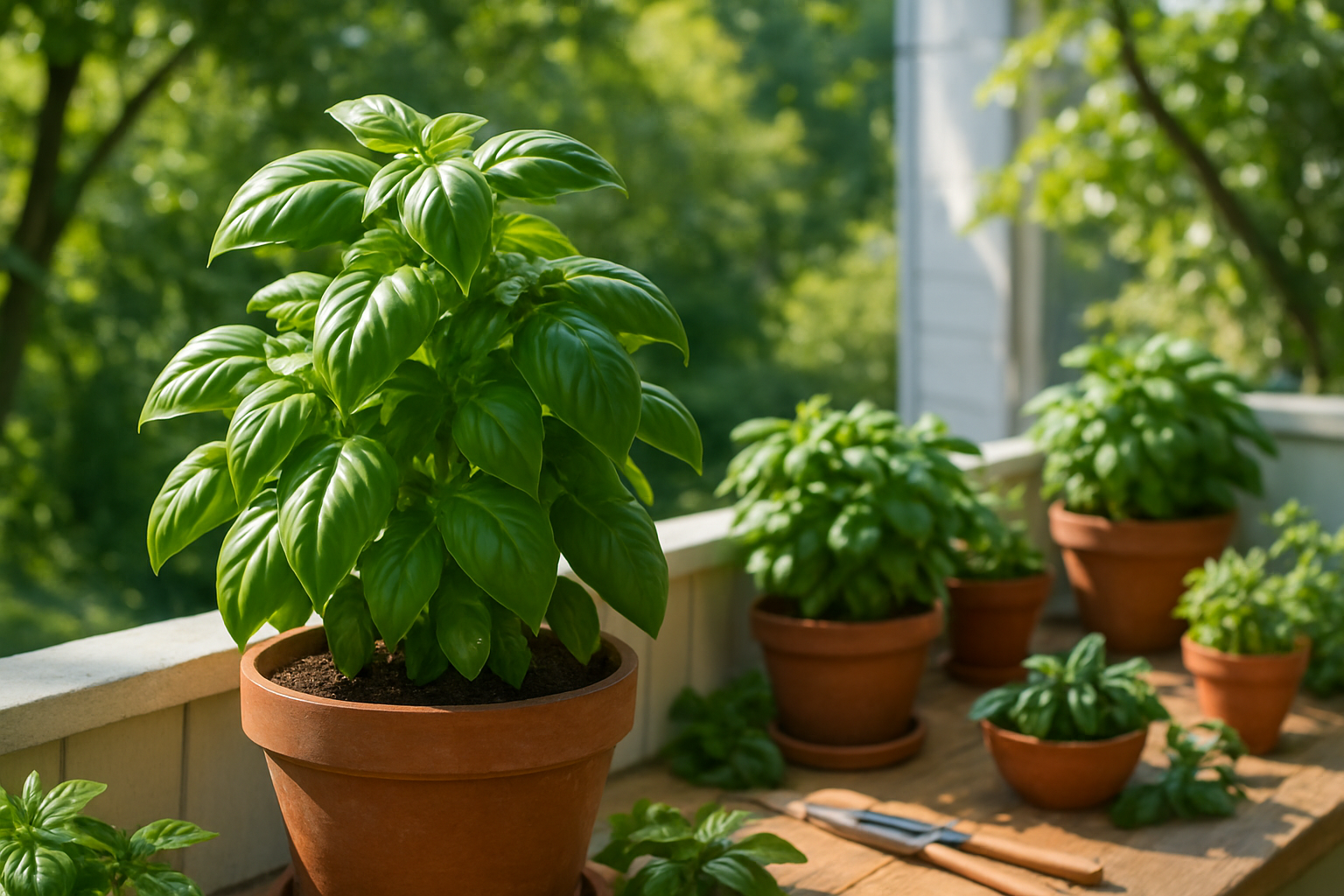Can Basil Grow in Shade?
Basil is famously known as a sun-loving herb, thriving best with at least six to eight hours of direct sunlight a day. In these conditions, basil grows lush, bushy, and produces its signature aromatic leaves full of flavor. However, if your garden or indoor space is a bit shaded, you can still successfully grow basil—just manage your expectations and adjust your care routine.
Basil will tolerate partial shade, particularly in the hottest climates where some respite from intense midday sun can actually prevent scorching and wilting. When growing basil in less-than-ideal light, aim for spots that get filtered sunlight or at least three to four hours of direct morning sun. For example, a bright balcony with gentle morning rays or a windowsill that gets dappled afternoon light can work.
Understand, though, that basil grown in shade often becomes leggier, with thinner stems and wider spacing between leaves as the plant stretches toward light. You may notice slower growth and smaller yields. The leaves might also be less aromatic, with milder flavor compared to sun-grown basil—often good enough for salads or garnish, but not as punchy for pestos or sauces that rely on that robust basil zing.
Shadier conditions can increase the risk of fungal issues, as soil may not dry out as quickly. So, water carefully and ensure good air circulation.
Overall, while basil really shines in full sun, a little flexibility with shade can still reward you with fresh, usable leaves, especially if you’re limited on space or sunlight—just remember, the more light you can give, the tastier your harvest will be.
Understanding Basil’s Light Requirements
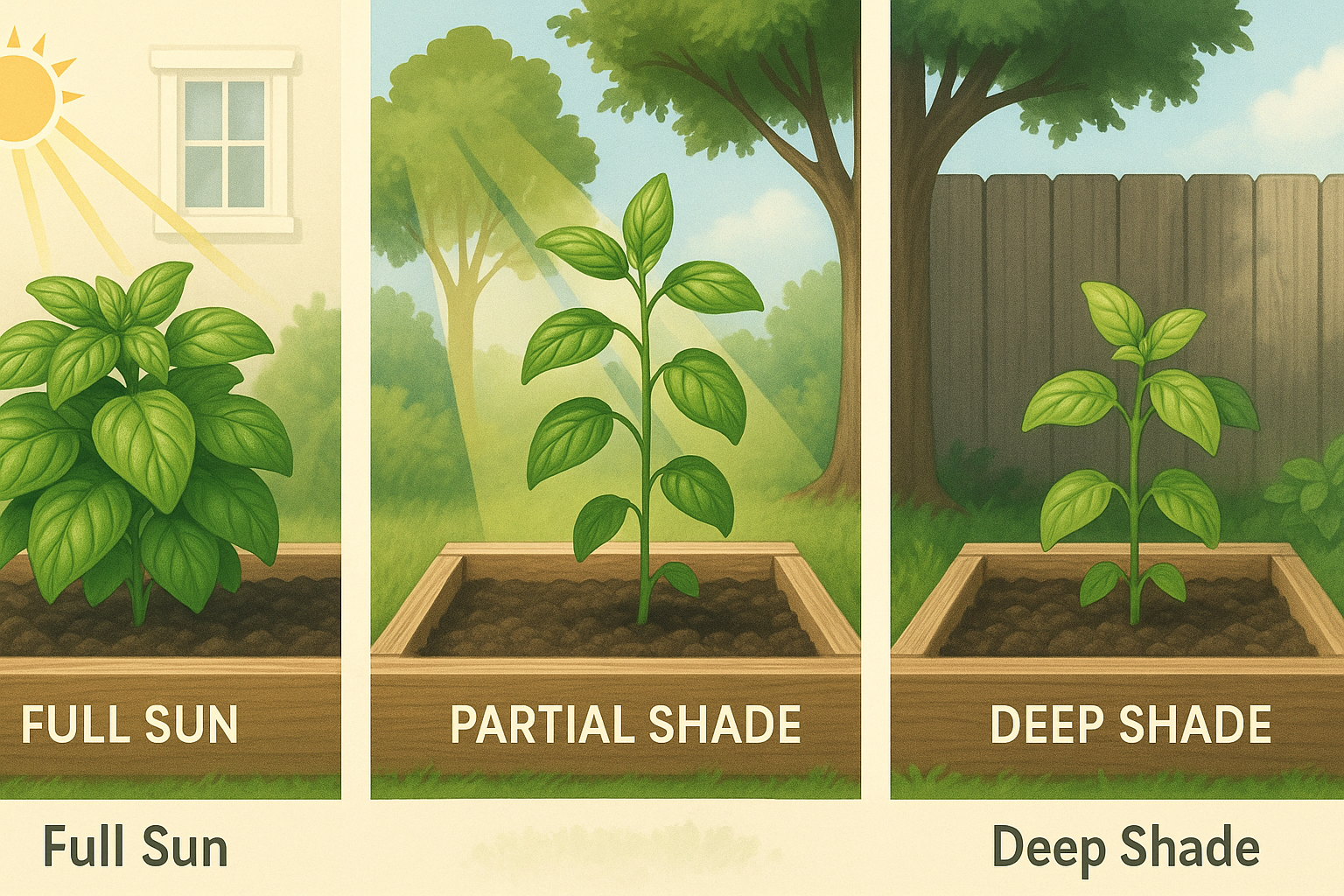
In practical gardening terms, “full sun” means a spot that receives direct sunshine for at least six hours a day, often more—think of an unobstructed patio or a south-facing window. “Partial shade” refers to areas that get three to six hours of sun or spots where taller plants or structures filter the light, like under a tree canopy or beside a privacy fence. “Deep shade” means less than three hours of direct sun, such as on the north side of a building or in a heavily canopied garden.
For basil to thrive, aim to give it a minimum of six to eight hours of full, unfiltered sunlight each day. This level of light ensures robust growth, strong flavors, and dense, bushy plants. If you’re growing basil indoors, place it on a well-lit windowsill or supplement with a grow light designed for edible herbs.
If basil receives only partial shade, you might notice it grows leggy, stretching toward any available light, and its leaves can become sparse or muted in flavor—a big disappointment if you’re hoping to make homemade pesto. In deep shade, basil’s growth slows dramatically, stems become weak, and leaves may look pale yellow or develop a tendency to drop off. These plants are also much more susceptible to pests and disease.
For anyone short on sunny garden space, try moving pots around to chase the sun, or consider planting basil in containers that you can shift as needed. Remember, the sunnier the spot, the healthier and more flavorful your basil will be, so prioritize placing this herb in the brightest patch you can find for bountiful harvests all summer long.
Tips for Successfully Growing Basil in Shaded Areas
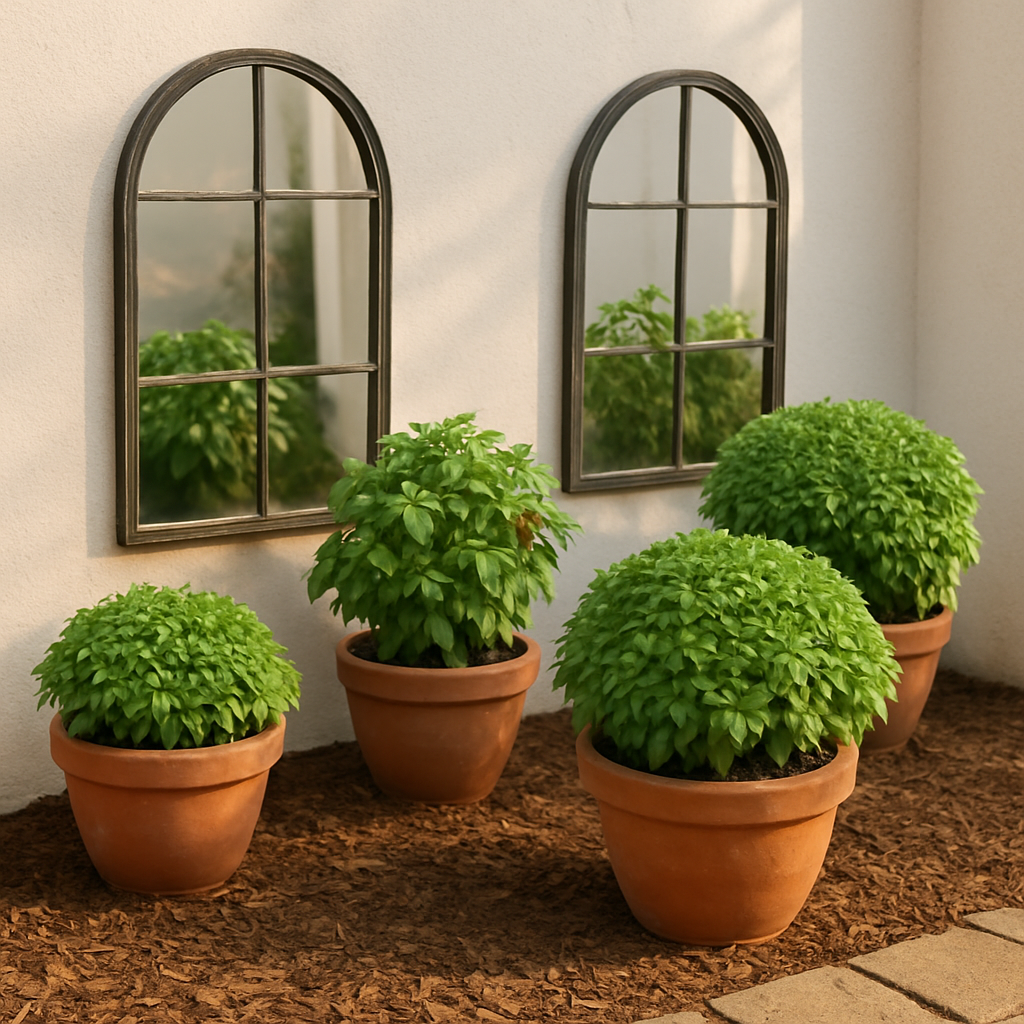
Growing basil in shaded areas may seem challenging, but with the right strategies, you can still enjoy lush, fragrant herbs. Start by maximizing whatever light you have—try positioning your basil near fences or walls that reflect sunlight, or use reflective surfaces like white-painted boards or mirrors to direct more light onto your plants.
If you’re gardening on a patio or balcony, move basil pots to spots that receive dappled sun throughout the day, such as under open tree canopies or along the edge of shaded patios. Some basil varieties tolerate lower light better than others; look for ‘Spicy Globe’ or ‘Greek Basil,’ which are more compact and adaptable to shadier conditions than classic ‘Genovese’ types.
Because basil in the shade grows more slowly and uses less water, avoid overwatering—aim for soil that’s just barely moist to the touch and allow the top inch to dry before watering again. Use a well-draining potting mix rich in compost, and watch out for fungal problems, which are more common in damp, low-light areas.
Mulch with a thin layer of straw or fine bark to help retain moisture without trapping too much humidity around the base of the plants. Remember to prune regularly, even if leaves are slower to develop, as this encourages bushier growth and better air circulation.
By tweaking your setup and care routine, you can turn even an overlooked shady corner into a thriving basil patch, perfect for adding fresh flavor to your kitchen.
Common Problems When Growing Basil in Shade (and Solutions)
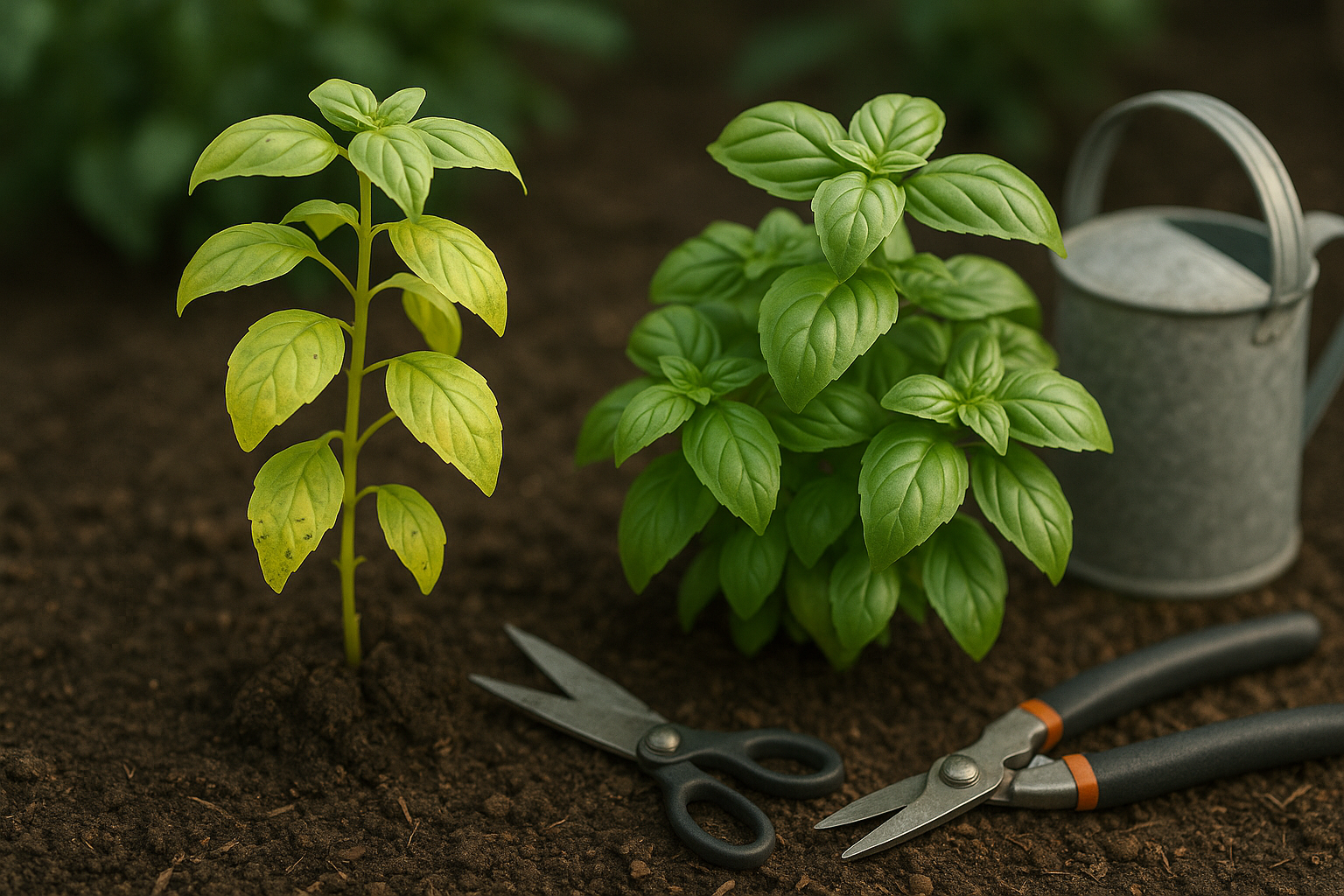
Growing basil in shady spots can lead to several frustrating problems, but understanding the signs can help you turn things around. One of the most noticeable issues is slow or leggy growth—basil plants in low light will stretch toward any available sun, leaving them tall, thin, and weak rather than bushy and robust. Leaves may appear pale instead of the usual lush green, and growth can stall altogether.
Another common shade-related problem is poor airflow, which makes basil more susceptible to fungal diseases like downy mildew or root rot. If you notice yellow spots, fuzzy growth on the undersides of leaves, or persistently soggy soil, these are clues your plant is struggling.
To solve these issues, try the following:
- Prune your basil regularly to encourage new shoots and keep plants compact.
- Increase the space between plants so air can circulate freely—even a few extra inches can make a big difference.
- If possible, gently relocate pots to an area that receives at least four hours of gentle morning sunlight.
- If moving your plants isn’t an option, use reflective surfaces or white backgrounds to bounce additional light toward your basil.
- Rotate your plants every few days to reduce leaning and ensure even exposure.
- Water in the morning so leaves dry by evening, helping to prevent disease in shadier, damper spots.
These simple adjustments will help your basil grow stronger, healthier, and more flavorful—even when garden space and sunlight are limited.
Harvesting and Using Basil Grown in Shade
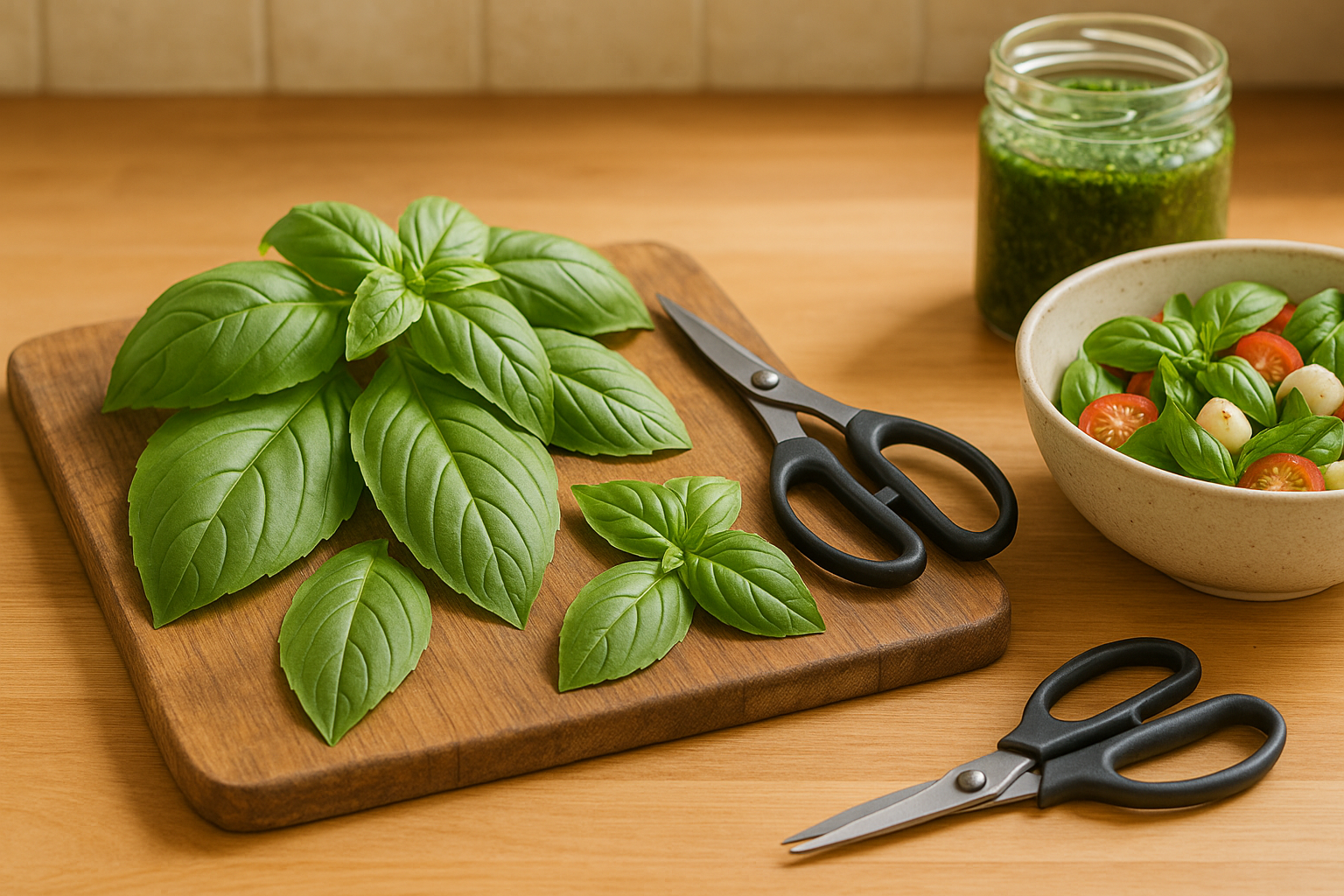
Shade-grown basil can thrive with the right care, but knowing the perfect time to harvest is key. You’ll know your basil is ready when each stem has at least six to eight mature, deep green leaves and the central stems reach about six inches tall.
Shade-grown basil often develops slightly larger, thinner leaves with a softer texture compared to sun-grown varieties, and its flavor tends to be milder and less robust. To encourage ongoing growth, always use clean scissors or pinch just above a leaf node (where two leaves meet the stem). This promotes new side shoots, making the plant bushier and more productive.
Never remove more than one-third of the plant at once; a gentle, gradual harvest helps prevent stress. Because shade-grown basil is milder and more tender, it works beautifully in recipes where its delicate flavor can shine—think fresh pestos, salads, or as a garnish for pasta and pizza.
Try layering whole leaves onto sandwiches or blending them into salad dressings for a subtle, aromatic touch. If you notice a slightly sweeter or grassy note due to less intense sun exposure, embrace this by pairing shade-grown basil with citrus or creamy cheeses.
Regular, careful harvesting not only ensures a steady supply but also keeps your basil healthy and vibrant all season long.
Final Thoughts and Quick Tips for Shady Basil Success
Basil is surprisingly adaptable and can still thrive without full, direct sunlight if you make a few smart adjustments. While it prefers at least six hours of light, basil will tolerate partial shade, especially during the hottest parts of summer.
Choose the sunniest spot you have, even if it only gets morning or dappled light. Remember, light shade is usually better than deep, dense shade. To keep your basil healthy, use well-draining soil and avoid overwatering—shadier spots tend to dry out more slowly.
Pinch back the tops often to encourage bushier growth and keep an eye out for pests, as shadows can sometimes increase humidity and pest risk. Try growing your basil in containers so you can move it around as the sun shifts during the season.
If your basil looks pale or leggy, consider supplementing with a simple grow light indoors. Every garden is different, so don’t be afraid to experiment with plant locations and watering routines to see what works best.
By observing how your basil responds and making small adjustments, you’ll find the right approach for shady conditions—often with more success than you might expect!
